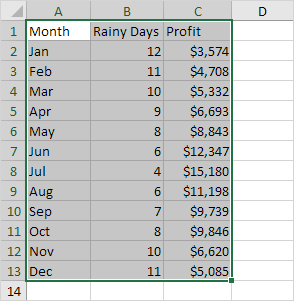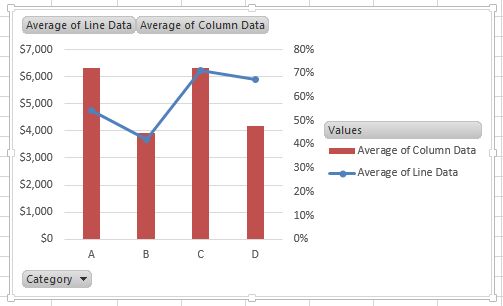

You can do this in the Axis title and Ticks & labels settings.
#HOW DO I DO COMBO IN EXCEL SERIES#
To avoid confusion for your readers, we recommend coloring your axis labels and ticks in the color of the series they refer to. In other words: Only use dual-axis charts to show when one data series moves in or out of sync with another data series. TIP: The only time you should use a dual axis chart is to show correlation. Your secondary axis range will default to the min and max in your data. You can also configure the styling of your axis titles and tick labels to appear in the color of the series. TIP: Use a single axis for combo charts with the same range and unit of data and a dual axis for data that uses two separate measurement units for the series.ĭual axis, you can edit your secondary (right) axis range in the
#HOW DO I DO COMBO IN EXCEL CODE#
Putting the entire code together: Sub createUserFormWithDynamicComboBoxes()Ī = False Step 6: Display the form 'Add and display the newly added form 17, " cbOptions.Additem Sheet1.Cells(cbCategory.ListIndex+1, i)" 14, " If Sheet1.Cells(cbCategory.ListIndex+1, i)="""" Then" 'Populate the second combo box with the options corresponding to the selected category

Then starting from column B, till the last column is reached, we will continue adding the options to the combo box. This sub will be fired whenever there is a change in the first combo box selection.įirst, we will need to clear the existing options that have been added to the second combo box. We will use the “cbCategory_Change” sub for populating the options combo box (where cbCategory is the name of the category combo box). Step 5: Add code to populate the options combo boxĮach time the category combo box selection is changed, the corresponding options for that selection need to be populated in the second combo box. 7, " cbCategory.AddItem Sheet1.Cells(i, 1)" 'Values will be taken from the first column in the spreadsheet 'Initialize the first combo box in the UserForm_Initialize subroutine The AddItem method is used to populate the combo box. “UserForm_Initialize” is the sub that will be called when a user form is loaded. This is because, if “Require Variable Declaration” is enabled, first line of the code will always be “ Option Explicit” and we want our code to be placed after that. Note that we have started inserting the code at line 2. The InsertLines method is used to add a line of code at a particular line number. Step 4: Add code to populate the category combo boxĪs the number of categories is dynamic, we will have to dynamically populate the category combo box each time the form is loaded.Ĭode module of a form is referred to using “newForm.CodeModule”. Similar to the first combo box, we will add the second combo box for options and set it’s properties 'Add the second Combo Box for options The name of the combo box will be used further in the code Step 3: Add the next combo box Next, we need to add the category combo box and set it’s properties Properties("Caption") = "Dynamic Combo Boxes" It’s caption, width and height properties are then set using the code below: Set newForm = (vbext_ct_MSForm)


 0 kommentar(er)
0 kommentar(er)
